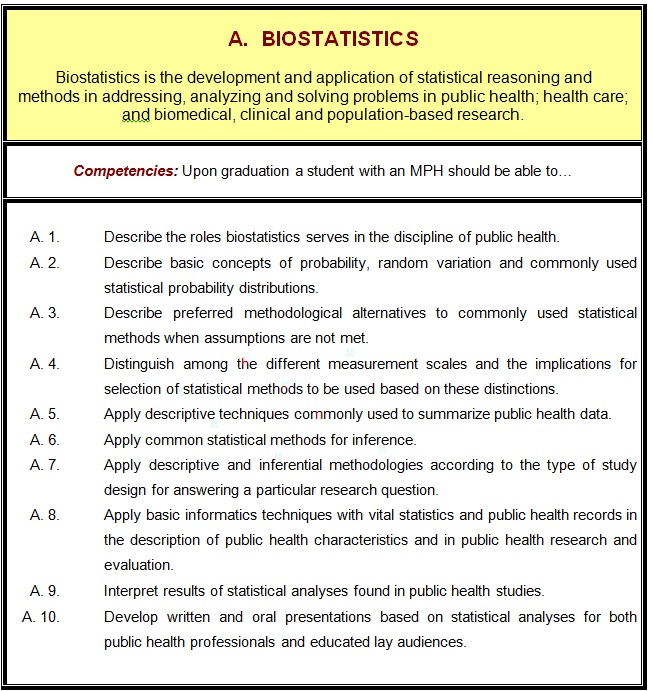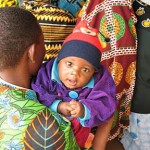..tied to research, calculation, and analysis, and for the right person may provide a good entry point…
 Statistician, “Dream Job of the Next Decade,” according to Google’s Chief Economist.
Statistician, “Dream Job of the Next Decade,” according to Google’s Chief Economist.
For those interested in a career in public health, there are many fields from which to choose. For those interested in the research end more than the public end, the field of Biostatistics may be a good fit. It is very much tied to research, calculation, and analysis, and for the right person may provide a good entry point to the public health industry.
SEE ALSO: Biostatistician Career, Salary & Job Description
According to the U.S. Bureau of Labor Statistics, the occupational outlook for statisticians in general is for 14% growth over the period from 2010-2020. The growth is consistent with the strong growth expected in all health care positions, and also indicates strong demand for adequately trained professionals with these skills.
The following sections will help to provide a quick explanation of the field of Biostatistics and what is involved in pursuing a Master of Public Health graduate degree with that specialization.
MPH Degree Programs in Biostatistics
-
University of Southern California – (100% Online & Highly Recommended) MPH in Biostatistics and Epidemiology – Joining the two areas of Biostatistics and Epidemiology will provide a broader level of knowledge involving these two, related studies. Use of statistical procedures will be shown and their ability to measure and identify health trends across populations.
-
University of Liverpool – (100% Online & Highly Recommended!) – MPH in Public Health – Want to study at a UK Non-Profit university without leaving your house? The University of Liverpool offers a fully accredited Online Masters in Public Health. Specialization tracks include Epidemiology, International Public Health, Management of Health Systems & Management. You will be adequately prepared for a career in Biostatistics. Ideal for developed and developing country students.
-
University of Florida – MPH in Biostatistics – For those with previous graduate degrees in the health sciences, this will help them to specialize in the analytical field of biostatistics. The program involves many opportunities for students to apply these various methodologies on their own. This graduate degree program is also available with an online option.
-
University of Nebraska Medical Center – MPH in Biostatistics – The availability of an online option is a welcome choice for many potential students. This program includes the area of social justice to the study of public health policy issues. The extensive experience in various methods of statistical research provides a strong foundation for students looking to get into this sector of the public health industry after graduation.
YouTube Special Feature
“Dream Job of the Next Decade,” according to Google’s Chief Economist. From a Keynote Presentation by Hal Varian – Chief Economist, Google, to the 2008 Almaden Institute – Hal Varian makes the argument that with data in huge supply and statisticians in short supply, being a statistician has to be the ‘really sexy job for the 2010s’.
Curriculum and Courses for a MPH in Biostatistics
The nature of Biostatistics being a specialization within the MPH degree indicates that there are core courses that make up the MPH, and then additional courses that create the concentration in Biostatistics. The courses in the MPH cover the five essential areas of an MPH:
-
Biostatistics
-
Environmental Health Services
-
Epidemiology
-
Health Policy Management
-
Social Behavioral Sciences
Beyond the core courses that provide the fundamental public health “big picture” there are the courses that make up the Biostatistics portion. These courses involve various types of analysis methods and techniques, and provide instruction around those subjects.
The MPH in Biostatistics program at Yale University provides the following courses under its Biostatistics track:
-
Fundamentals of Clinical Trials
-
Applied Regression Analysis
-
Categorical Data Analysis
-
Longitudinal Data Analysis
-
Applied Survival Analysis
-
Design and Analysis of Epidemiologic Studies
-
Probability Theory
-
Theory of Statistics
These course, with a choice for customization, are what are required for a graduate to have earned a specialization in Biostatistics as a part of earning their Master of Public Health degree.
Sample of Core Competencies
For graduates of an MPH program, there are certain core competencies, as defined by the Association of Schools of Public Health. They provide the standards for nearly all schools of public health, and require that all graduates of an MPH degree have mastered all relevant skills to an acting professional in public health. These skills are as follows:
-
Communication and Informatics
-
Diversity and Culture
-
Leadership
-
Public Health Biology
-
Professionalism
-
Program Planning
-
Systems Thinking
The core competencies related to the scientific tools essential to the study of Biostatistics and are more specific to the actual field. These relate to the skills they use in everyday practice, and outline their framework for problem solving.
Again, using the program at Yale University as an example, the core competencies are:
-
Describe concepts
-
Develop efficient programs
-
Apply techniques
-
Perform analyses
-
Interpret results
-
Communicate findings
In having gained the ability to conduct a research study of a particular problem in public health following these steps, a graduate has demonstrated the abilities they earned while achieving the MPH in Biostatistics.
Discipline-specific Competency for Biostatistics according to ASPH.org

Biostatistics Scholarships, Fellowships & Training
-
Howard Hughes Predoctoral Fellowship – Designed to support graduate work in biological research programs, with the goal of reduction of disease and promotion of health. Students need to be at the beginning of their graduate studies of biological sciences, which includes Biostatistics.
-
University of Washington Biostatistics Teaching Assistantship – These awards are given to students to provide their tuition expenses plus a living stipend. These positions are involved in courses taught through the Department of Biostatistics and include grading papers, instructing in labs and being available for office hours.
-
University of Buffalo Graduate Opportunity Program – Provides tuition scholarships to certain students who have graduated from certain approved educational programs through the state of New York. Studies must include graduate level studies and be on a full-time basis.
-
University of Buffalo Presidential Fellowship – These students must have a cumulative GPA of 3.4 or higher, as well as scoring in the 75th percentile in the GRE Subject Test. These tests and grades must have occurred within the last five years.
-
Sidney Addelman Master’s Award – This annual scholarship is given to graduate students in statistical studies who demonstrate academic excellence, through exam scores and classroom grades.
-
Graduate Research Fellowship – The National Science Foundation Graduate Research Fellowship is open to graduate students in the beginning of their graduate studies. Can be either citizens, nationals, or permanent residents of the U.S. The fields of study must be from an acceptable list of fields, such as geosciences, social sciences, life sciences, and others.
-
Gertrude Cox Scholarship – This scholarship is offered by the department of biostatistics at Emory University. It encourages and supports full-time women graduate students that are in courses of study that are statistical oriented.
-
Center for Global Health Scholarship – This full scholarship is given to MPH students at Johns Hopkins University who aspire to work in an international scope after program graduation. To be eligible, a student can either be a U.S. or international student.
-
Reed Frost Scholarship – For those students who receive this award, it includes a 75% tuition payment, and is given to those interested in the field of biostatistics, which is due in large part to the namesakes of this scholarship, Lowell J. Reed and Wade Hampton Frost.
-
McGill University Teaching Assistantship – Provides full tuition and stipend for performing various teaching duties that assist professors in their duties. The position requires certain prerequisite courses to have been completed, as well as an interest in advancing in those studies.
Top Biostatistics Journals
-
Biostatistics – Developments in the methods and reasoning behind the statistical analysis of public health are the main topic of inclusion. New and innovative ways of using existing models is of high priority to the consumers of this information. Particularly ways that current biostatistics professionals can use to apply to current health problems.
-
The International Journal of Biostatistics – This journal aims to provide information that covers the entire range of biostatistics issues, from theoretical advances to translating existing problems into a framework of varying biostatistics techniques. They allow both original research pieces as well as review articles.
-
American Journal of Biostatistics – This peer review journal is maintained to provide a place where current biostatistics professionals can look for information from the latest sources on applications involving statistical methods for public health research. The main fields of focus tend to be in the areas of medicine and agriculture, but is not restricted to those fields.
-
Journal of Biometrics and Biostatistics – This open-access journal provides a complete resource for current developments and discoveries in all areas of these fields. The innovative part of this journal is that is freely available online and is not burdened by restrictions or subscriptions. It is accessible to all researchers internationally.
-
Annals of Biometrics & Biostatistics – Promoting the development of new statistical methods used in public health research is the primary function of this journal. They include many industry-specific methods and models, as well as many specific to the field of public health. By challenging mathematical statistical models, they hope to inspire new methods to be discovered.
YouTube Special Feature
What is Biostatistics? O. Dale Williams, PhD, Professor and Chair in Biostastics at Florida International discusses the need for biostatistics.
Free Online Courses in Biostatistics
-
Biostatistics Lecture Series – The ability to observe the researchers and to hear about unified topics is completed through several presentations each detailing importance of that topic. The lectures are more abstract than specific, and provide opportunities to see perspective of a biostatistical researcher in the public health sector.
-
Introduction to Biostatistics – For those with little expertise on the field of biostatistics, this introductory course will provide a key foundation for the field and provide opportunities to learn about the relevant topics within the study. This beginning course deals more with the interpretation of concepts and data, more than the calculating of that data.
-
Methods in Biostatistics I – Fundamental methods of the study of biostatistics are introduce in this course. That is built and then expanded by working with these methods in order to comprehend how they are used and applied to existing problems. Communication of the resulting data will also be emphasized in this course.
-
Methods in Biostatistics II – This course continues where class I left off. They work more thoroughly with those methods, and add more complex methods and models to the tools that the students have with which to assess public health situation with. They work in probability models, inferences, central limit theorems, and more.
-
Patients and Populations: Medical Decision-Making – Studying the information gathering and assessment used in health care decisions, this course focuses on the area of medical decision making. For assessment, clinical questions, case scenarios, use of core biomedical resources, and apply probabilistic reasoning to these situations.
-
Epidemiology and Biostatistics – This course includes enough basic instruction on epidemiology and biostatistics for the student to be able read and comprehend medical literature about these subjects. The online free course does not include the small group discussions mentioned during the course, but does include course materials to aid in understanding of the information.
-
Statistics in Medicine – This introduction to the use of statistical methods in medicine will instruct students on how to interpret the various data related to medical studies and how to make the more qualified inferences from the various data. In addition, the exploration of the many potential pitfalls that exist in these analyses will be addressed in order to prepare more effective solutions.
-
Measuring Health Disparities – This course provides instruction on how to measure health disparity, including how to gather relevant information, how to calculate real results from that information, and how to interpret that data. The course is made up of four sections, for easier completion of the course materials.
-
Health in Numbers: Quantitative Methods in Clinical & Public Health Research – Monitoring and improving the health of individuals and populations require careful study of quantitative models. Extracting patterns from random groups of data and then make relevant assumptions based on that data are essential.
-
Epidemiologic Statistics for Public Health – This complete course involves both tests and test results for students to be able to properly assess their comprehension of the materials. Course instructs on a full range of statistical methods and analyses that are used in the field of health care, and in the computation of many elements of public health.
Additional Biostatistics Links





